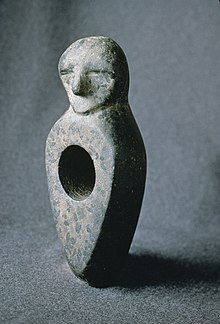
-
Published: 18 February 2023

Edited by| Alexander Yanixiana
History section CJ journalist
18 Feb.2023
The terms "Stone Age", "Bronze Age", and "Iron Age" are not intended to suggest that advancements and time periods in prehistory are only measured by the type of tool material, rather than, for example, social organization, food sources exploited, adaptation to climate, adoption of agriculture, cooking, settlement, and religion. Like pottery, the typology of the stone tools combined with the relative sequence of the types in various regions provides a chronological framework for the evolution of humanity and society. They serve as diagnostics of data, rather than characterizing the people or the society.
Lithic analysis is a major and specialized form of archaeological investigation. It involves the measurement of stone tools to determine their typology, function, and technologies involved. It includes the scientific study of the lithic reduction of the raw materials and methods used to make the prehistoric artifacts that are discovered. Much of this study takes place in the laboratory in the presence of various specialists. In experimental archaeology, researchers attempt to create replica tools, to understand how they were made. Flintknappers are craftsmen who use sharp tools to reduce flintstone to flint tool.
RELATED NEWS| PREHISTORIC STONE AGE MILLION YEARS AGO
RELATED NEWS|Prehistoric Stone Age million years ago

A variety of stone tools
In addition to lithic analysis, field prehistorians use a wide range of techniques derived from multiple fields. The work of archaeologists in determining the paleo context and relative sequence of the layers is supplemented by the efforts of geologic specialists in identifying layers of rock developed or deposited over geologic time; of paleontological specialists in identifying bones and animals; of palynologists in discovering and identifying pollen, spores and plant species; of physicists and chemists in laboratories determining ages of materials by carbon-14, potassium-argon, and other methods.
The study of the Stone Age has never been limited to stone tools and archaeology, even though they are important forms of evidence. The chief focus of study has always been on society and the living people who belonged to it.
Useful as it has been, the concept of the Stone Age has its limitations. The date range of this period is ambiguous, disputed, and variable, depending upon the region in question. While it is possible to speak of a general 'Stone Age' period for the whole of humanity, some groups never developed metal-smelting technology, and so remained in the so-called 'Stone Age' until they encountered technologically developed cultures. The term was innovated to describe the archaeological cultures of Europe. It may not always be the best in relation to regions such as some parts of the Indies and Oceania, where farmers or hunter-gatherers used stone for tools until European colonization began.
Stone Age hand axe engraved with human face found in Kiuruvesi, Finland.
Archaeologists of the late 19th and early 20th centuries CE, who adapted the three-age system to their ideas, hoped to combine cultural anthropology and archaeology in such a way that a specific contemporaneous tribe can be used to illustrate the way of life and beliefs of the people exercising a particular Stone-Age technology. As a description of people living today, the term Stone Age is controversial. The Association of Social Anthropologists discourages this use, asserting:
To describe any living group as 'primitive' or 'Stone Age' inevitably implies that they are living representatives of some earlier stage of human development that the majority of humankind has left behind.
